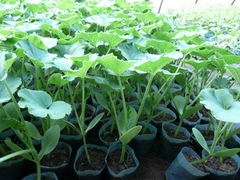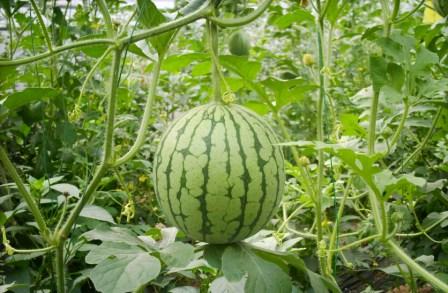Cultivation techniques of Chinese Cabbage in Autumn
Type and variety (1) the subspecies of Chinese cabbage can be divided into four varieties: "loose leaf", "semi-heading", "flower heart" and "heading". Among them, the heading variety has three ecotypes: oval type, flat head type and straight cylinder type. The above four varieties and three ecotypes of heading and heading varieties belong to basic types. In addition They cross with each other to produce the following secondary types: (1) flat head straight cylinder type (2) flat head oval type (3) cylinder type (4) flower heart straight cylinder type (5) flower heart oval type (2) main cultivated variety 1, loose leaf variety 2, semi-heading variety 3, flower heart variety 4, Heading variety (a total of eight types) (1) oval type (2) flat head type (3) flat head type (4) flat head straight cylinder type (5) flat head oval type (6) flower heart straight cylinder type (8) flower heart oval type 2. Growth and development characteristics of Chinese cabbage can be divided into vegetative growth and reproductive growth stages. 1. Vegetative growth stage (1) germination stage: on the third day after sowing, the cotyledons fully unfold and two basal leaves are exposed, which is the critical characteristic of the end of the germination period. (2) Seedling stage: 7-8 days after sowing, the basal leaves grew to the same size as the cotyledons and arranged perpendicularly with the cotyledons into a cross, followed by the first leaf sequence of the above-ground leaves to grow into seedlings. (3) rosette: the leaves that grow into the second to third rings of mesophytic leaves during this period. New leaf primordia occur at the later stage of rosette and grow into young terminal leaves (globules). When all the rosette leaves grow up, the young globular leaves in the center of the plant are folded, folded or twisted. This is the critical feature of the end of the rosette. (4) heading stage: during this period, the terminal leaves grow and form leaf balls. This period can be divided into Prophase, metaphase and anaphase. Prophase-the outer leaves of the bulb grow rapidly to form the outline of the bulb, and the appearance of the bulb has been formed, which is the critical feature of the end of the Prophase. Metaphase-the leaves in the bulb grow rapidly and enrich the interior. In the later stage, the volume of the leaf ball no longer increases, but continues to enrich the interior. At this time, the outer leaves gradually aged, and the leaf margin appeared yellow. (5) dormancy period: Chinese cabbage is forced to dormant when it encounters low temperature and lives on the nutrients and water stored by leaf bulbs. Continue to form young buds during the dormant period in preparation for transfer to reproductive growth. 2. Reproductive growth stage (1) bolting stage: the dormant seed began to grow at the beginning of spring in the following year, and the flower began to elongate and entered the bolting stage. (2) flowering stage: Chinese cabbage enters the flowering stage after the first flowering, and the flowers of the whole plant bloom successively. At the same time, flower branches grow rapidly, forming primary, secondary and tertiary branches step by step to expand flowering and fruiting plants. (3) the podding stage: enter the podding stage after flowering. During this period, the flower bolts and branches stopped growing, and the pods and seeds grew vigorously until the pods were withered and yellow and the seeds matured.
Related
- A course of planting techniques and methods on how to grow carrots
- How to plant the latest tulips?
- Is it better to pick tea in the morning or in the afternoon? When is the best time for tea to be picked? what is the third or fifth tea?
- Launch Yuanxiao Happy combination Haocha + Tea Yuan healthy Taste
- Penghu Tourism "Fireworks 20 Parade with You"
- 2022 West Lake Happiness holds "Digital Revitalization Voucher" and draws iphone13 and laptop.
- Banqiao Fuzhou social houses are designed to change start-up combined with police elimination to create a safe and livable environment
- The convenient measure of "mechanical weeding" in Xinbei has been abused and the Agriculture Bureau has imposed heavy penalties on the illegal land consolidation.
- Changgeng University Joins Hands with Four Memory Factories to Rescue Memory Talent Shortage
- The list of Taiwan's top 100 MVP managers is listed by the Director-General of the Farmers' Association of Sanxia District.



